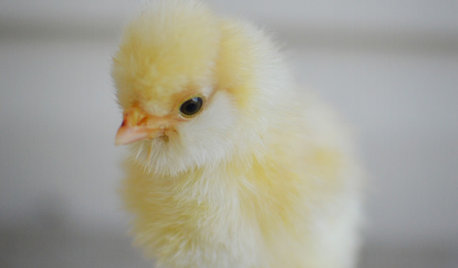Bin size and worm breed for Texas heat
quentinfool
14 years ago
Related Stories

GARDENING GUIDESTexas Gardener's June Checklist
Win the battle against heat and drought with these plant picks and extra effort, for a garden that reigns supreme in summer
Full Story
PETSWhat You Need to Know Before Buying Chicks
Ordering chicks for your backyard coop? Easy. But caring for them requires planning and foresight. Here's what to do
Full Story
PETSSo You're Thinking About Getting a Dog
Prepare yourself for the realities of training, cost and the impact that lovable pooch might have on your house
Full Story
EDIBLE GARDENSHow to Grow Your Own Sweet Summer Crops
This guide will help any gardener get started on growing the freshest warm-season veggies and berries for summer
Full Story
GARDENING GUIDESNew Ways to Think About All That Mulch in the Garden
Before you go making a mountain out of a mulch hill, learn the facts about what your plants and soil really want
Full Story
FARM YOUR YARDHouzz Call: Show Us Your One-of-a-Kind Chicken Coops
Do you have a fun or stylish backyard shelter for your feathered friends? Post your pictures and stories in the Comments!
Full Story
FALL GARDENING7 Reasons Not to Clean Up Your Fall Garden
Before you pluck and rake, consider wildlife, the health of your plants and your own right to relax
Full Story
HOUSEKEEPINGHow to Fix a Stinky Garbage Disposal
No plumber’s fee or even a trip to the hardware store is required with these easy solutions
Full Story
CONTRACTOR TIPSBuilding Permits: What to Know About Green Building and Energy Codes
In Part 4 of our series examining the residential permit process, we review typical green building and energy code requirements
Full Story
LIFEThe Top 5 Ways to Save Water at Home
Get on the fast track to preserving a valuable resource and saving money too with these smart, effective strategies
Full StoryMore Discussions






gmw1
amcook
Related Professionals
Baltimore Landscape Architects & Landscape Designers · Graham Landscape Architects & Landscape Designers · Otsego Landscape Architects & Landscape Designers · San Juan Landscape Architects & Landscape Designers · Commack Landscape Contractors · Englewood Landscape Contractors · Fort Atkinson Landscape Contractors · Gresham Landscape Contractors · Panama City Beach Landscape Contractors · Wareham Landscape Contractors · Rolling Meadows Stone, Pavers & Concrete · Gainesville General Contractors · Havre de Grace General Contractors · New Bern General Contractors · Norwell General Contractorsrandomz
plumiebear
quentinfoolOriginal Author
gmw1
borderbarb
cheelo
randomz
cheelo
randomz
dsfoxx
nacskins
nexev - Zone 8b